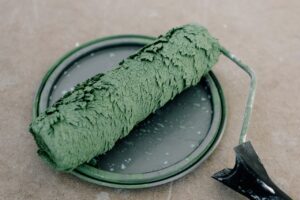
Cost Vs. Value: Why Commercial Painting Is A Worthy Investment For Walnut Creek Businesses
Are you a business owner in Walnut Creek looking to make a lasting impression on your customers? Wondering how to enhance the overall appearance and professionalism of your establishment? Look no further than commercial painting. Investing in professional painting services can have a significant impact on your business’s success. In today’s competitive market, first impressions matter more than ever. A fresh coat of paint can instantly transform the look and feel of your business, creating a positive initial experience for customers and clients. It not only boosts your brand image but also adds credibility to your enterprise within the community. Studies show that customers are more likely to trust businesses with an appealing aesthetic. By investing in commercial painting, you increase customer trust and foster loyalty, leading to higher chances of repeat business. It has been found that businesses that prioritize their appearance witness a significant increase in customer retention rates. Don’t underestimate the power of commercial painting. Join countless successful entrepreneurs in Walnut Creek who have made this worthy investment for their businesses’ long-term growth and prosperity. Benefits Of Commercial Painting For Walnut Creek Businesses Extends The Lifespan Of Commercial Properties By Protecting Them From Damage Commercial properties in Walnut Creek are subject to various environmental factors that can cause wear and tear over time. Harsh sunlight, rain, wind, and even pollution can all contribute to the deterioration of buildings. However, investing in commercial painting can help extend the lifespan of these properties by providing a protective barrier against these elements. A fresh coat of paint acts as a shield, preventing moisture from seeping into the walls and causing mold or rot. It also helps protect against corrosion and rust on metal surfaces. By regularly maintaining and repainting their buildings, businesses in Walnut Creek can avoid costly repairs and replacements in the long run. Provides A Fresh And Updated Look To Outdated Or Worn-Out Buildings First impressions matter, especially. If your business premises appear outdated or worn out, it may give potential clients the wrong impression about your brand. Commercial painting offers an opportunity to revitalize your building’s exterior or interior appearance. With a new color scheme or a modern design, you can transform your business property into an eye-catching space that reflects your brand identity. Whether it’s a retail store, office building, or restaurant in Walnut Creek, a fresh coat of paint can breathe new life into any space and make it more inviting to customers. Allows Businesses To Stand Out Among Competitors In Walnut Creek In a competitive market like Walnut Creek, businesses need every advantage they can get to stand out from their rivals. Commercial painting is one effective way to differentiate yourself from competitors who may neglect their property’s aesthetics. By choosing unique colors or incorporating bold designs into your building’s exterior or interior spaces, you create a visual interest that attracts attention. This distinction not only helps increase foot traffic but also builds brand recognition among residents and visitors in Walnut Creek. Enhances Employee Morale And Productivity With A Visually Appealing Work Environment A visually appealing work environment can have a significant impact on employee morale and productivity. When employees are surrounded by a well-maintained and aesthetically pleasing space, it can boost their mood and motivation. Commercial painting allows you to create an inspiring atmosphere for your employees in Walnut Creek. By using colors that promote focus, creativity, or relaxation, you can tailor the paint job to suit the specific needs of your business. A vibrant and visually stimulating workplace can foster a positive work culture and contribute to higher levels of productivity among your team. Impact On Property Value And Aesthetics Investing in commercial painting for Walnut Creek businesses can have a significant impact on both property value and aesthetics. By enhancing the appearance of commercial properties, this investment proves to be a wise choice with long-term benefits. Increases Property Value, Making It An Investment With Long-Term Benefits When considering a new property or evaluating rental properties, potential buyers and tenants often prioritize the overall quality and appearance of the building. A fresh coat of paint can instantly transform a dull exterior into an eye-catching sight, increasing its market value. According to real estate experts, properties that undergo aesthetic upgrades tend to sell or lease at higher prices compared to those that lack such improvements. Attracts Potential Buyers Or Tenants Due To Improved Aesthetics The first impression is crucial. The appearance of a commercial property plays a pivotal role in creating an inviting atmosphere that captures attention. With a well-executed commercial painting project, businesses in Walnut Creek can significantly enhance their curb appeal. This improved visual appeal not only draws more foot traffic but also entices prospective buyers and tenants who are looking for visually appealing spaces. Improves Curb Appeal, Attracting More Foot Traffic To Businesses In Walnut Creek A vibrant and well-maintained exterior has the power to make any business stand out from the competition. Commercial painting allows businesses in Walnut Creek to revitalize their buildings’ exteriors, making them more attractive and memorable. When passersby notice an aesthetically pleasing storefront or office building, they are more likely to be curious about what lies inside. This increased foot traffic can lead to higher customer engagement and ultimately result in greater profitability for businesses. Makes Properties More Marketable, Leading To Faster Sales Or Leases In today’s competitive real estate market, speed is often essential. Commercial painting offers an effective solution to make properties more marketable. By improving the appearance of a building, potential buyers or tenants are more likely to be enticed by its aesthetic appeal. This increased interest can lead to faster sales or leases, reducing the time and effort required to find suitable occupants for commercial spaces in Walnut Creek. https://www.youtube.com/watch?v=3CkikCtp_IY Cost VS. Value Analysis For Walnut Creek Businesses Commercial painting is often overlooked as a worthy investment by Walnut Creek businesses. However, when considering the cost versus value, it becomes clear that commercial painting offers an array of benefits that




